#Angola history
Explore tagged Tumblr posts
Text
youtube
#youtube#news#bilateral relations#international partnership#Biden#global diplomacy#international cooperation#Biden speech#foreign affairs#foreign policy#Angola news#African relations#Angola#international relations#United States#African leaders#diplomacy#Angola history#international partnerships#African affairs#US politics#Angolan history#Africa#President Biden#historical relations#U.S. foreign policy#US government#speeches
0 notes
Text
Nzinga Mbande: Warrior Queen of Angola
Nzinga Ana de Sousa Mbande (c. 1583 – 17 December 1663) was a southwest African ruler who ruled as queen of the Ambundu Kingdoms of Ndongo (1624–1663) and Matamba (1631–1663), located in present-day northern Angola. Born into the ruling family of Ndongo, her father Ngola Kilombo Kia Kasenda was the king of Ndongo. She is remembered in Angola as the Mother of Angola, the fighter of negotiations,…

View On WordPress
#African History#African Leaders#Ambundu Kingdoms of Ndongo#Angola History#central africa history#Nzinga Ana de Sousa Mbande
1 note
·
View note
Text

Happy Independence Day to our Angolan Fam! 🇦🇴✊🏾 Today, we honor Angola’s spirit and celebrate the resilience and achievements of its people. Here are a few things you may not know about Angola:
🇦🇴 Angola gained its independence from Portugal in 1975, marking a powerful moment in history.
🇦🇴 The awe-inspiring Kalandula Falls is one of Africa’s largest waterfalls—an incredible sight and part of Angola’s natural beauty.
🇦🇴 Angola’s semba music has deep roots and has even inspired the rhythms of samba in Brazil.
🇦🇴 Known as the “Paris of Africa,” Luanda’s energy and architecture tell stories of Angolan strength and progress.
Join us in celebrating Angola’s place in our shared African legacy! 🖤
#AngolaIndependence #AfricanAncestryFamily #MakeTheConnection
42 notes
·
View notes
Text




Free Coloring Pages inspired by the warrior Queen Nzinga of Matamba & Ngola which is present day Angola 🇦🇴.
A PDF copy of these coloring sheets are available on my Gumroad page!
If you color any of my pages, please tag me. I would to see your creativity!
#freebies#free printable#black coloring pages#juneteenth coloring#juneteenth#black coloring books#black women#african#african history#angola#african america history#black history art#black tumblr#blacklivesmatter#black positivity#african queen#historical fashion#historical art#june 2024#juneteenth2024#gumroad#free coloring pages
71 notes
·
View notes
Text



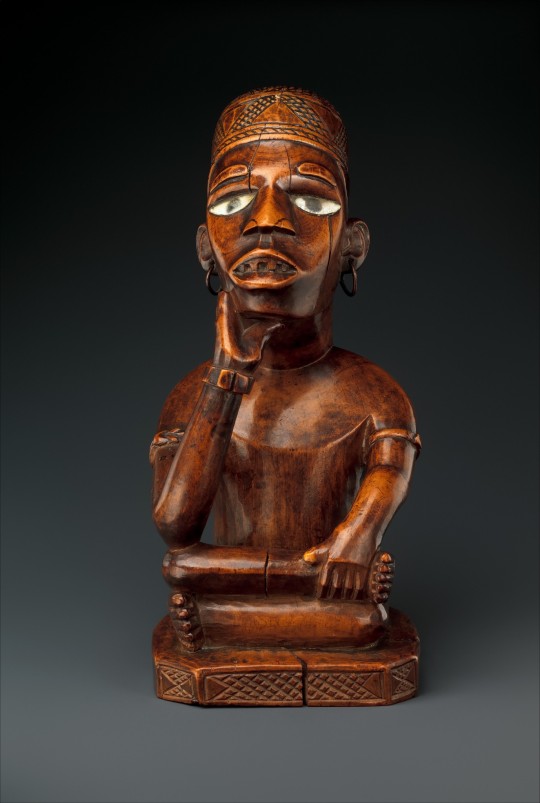
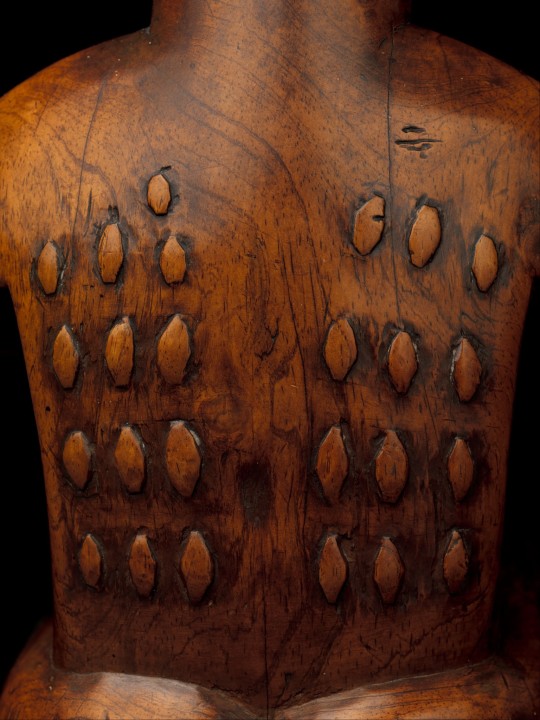
▪︎ Seated Male Figure.
Date: mid to late 19th century
Place oforigin: Angola or Democratic Republic of the Congo
Culture: Kongo peoples, Kakongo group
Medium: Wood, glass, metal, kaolin.
#19th century#19th century art#art#decorative arts#history of art#history#art history#ethnic art#traditional art#sculpture#seated male figure#angola#democratic republic of the congo#congo#kongo#kakongo
71 notes
·
View notes
Photo

Kingdom of Kongo
The Kingdom of Kongo (14-19th century CE) was located on the western coast of central Africa in modern-day DR of Congo and Angola. Prospering on the regional trade of copper, ivory, and slaves along the Congo River, the kingdom's wealth was boosted by the arrival of Portuguese traders in the late 15th century CE who expanded even further the slave trade in the region. Kongo kings were converted to Christianity but relations with the Europeans deteriorated as each side attempted to dominate the other. Civil wars and defeats to rival neighbouring kingdoms finally saw the Kongo state collapse in the early 18th century CE. The Portuguese reinstalled the position of the Kongo monarchs, and the state limped on in name only well into the 19th century CE but the kingdom's days as the strongest power in west-central Africa were now but a distant memory.
Formation & Territory
Located on the western coast of central Africa and south of the Congo River (formerly known as the Zaire River), the kingdom arose in the late 14th century CE following the alliance of several local principalities which had been in existence since the second half of the first millennium CE. Kongo, dominated by Bantu-speaking peoples, had its capital at Mbanza Kongo - known to the Kongolese as Banza, meaning 'residence of the king' - which was located on a fertile and well-watered plateau just below the western end of the Congo River. The kingdom expanded its territory further by a gradual process of military conquest, probably motivated above all by a desire to acquire slaves. At its peak in the 15th and 16th century CE, the kingdom controlled some 240 km (150 miles) of the coast from the Congo River in the north to just short of the Cuanza River in the south, and spread some 400 km (250 miles) into the interior of central Africa up to the Kwango River.
Continue reading...
40 notes
·
View notes
Photo
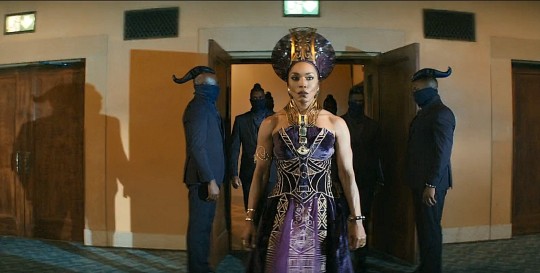
This picture has so much power and greatness in it.
Here you see Queen Ramonda daughter of Lumumba walking with all the glory that belongs to a Queen of her rank and she is followed by her personnal guards.
You can note here the men have the Himba tribe hair style, Himba tribe are from Nambia and the south of Angola my country of origin.
I also love the patterns on her dress and the ornaments of gold and probably vibranium she is wearing.
Angela Basset was still unmatched on her performance =)
#black panther#wakanda forever#angela basset#himbatribe#angola#namibia#kimoyo beads#marvel mcu#africa#queen#stanlee#black history#vibranium#shuri#ramonda#tchalla#mcu#letitia wright
441 notes
·
View notes
Text
Artistic exchange between Brazil and Angola aims to reclaim colonial ties
For the first time in its 73-year history, the Sao Paulo Biennial is taking artworks to the African continent with a travelling showcase in Angola. The event's curators told RFI they hope the project will highlight long-standing correspondences between Angola and Brazil, united by a shared colonial past.

The 35th Biennial is the first to go to Africa as part of the travelling exhibitions programme established by the Sao Paulo show, one of the biggest art events in the southern hemisphere.
After touring cities in Brazil, Argentina and Bolivia, it is on display in Angolan capital Luanda until December 2024.
Brazil, which was a Portuguese colony from 1500 to 1825, was the first country to recognise Angola's independence from Portugal in January 1975.
And now, as Angola prepares to celebrate 50 years of independence, the Brazilian biennial wanted to focus on the cultural links between the South American powerhouse and the largest Portuguese-speaking country in Africa.
Continue reading.
#brazil#angola#politics#art#history#museums#brazilian politics#angolan politics#image description in alt#mod nise da silveira
17 notes
·
View notes
Text
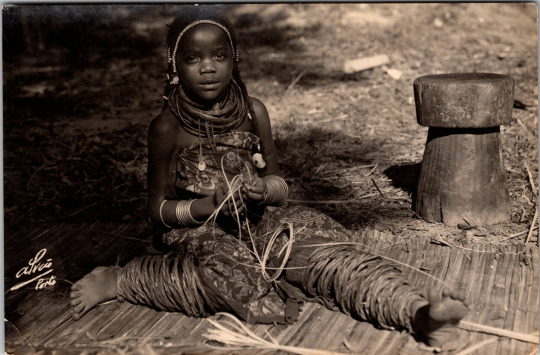
This vintage real photo postcard features a young girl occupied with her weaving. She is wearing traditional native clothing as well as traditional jewelry.
Quipungo, located in Cuanza Sul, Angola. 1934
40 notes
·
View notes
Photo

Black History Month: Ngola Njinga of Ndongo
Njinga was born into the royal family of Ndongo (now Angola), in west Africa, in 1582.
From the age of twenty, Njinga led a group of rebels against the Portuguese invasion of the region. They were elected Ngola (ruler) in 1624, and described by Portuguese colonists as “the most powerful adversary that has ever existed in Africa”.
As a part of their fight with the Portuguese, Njinga allied with the Imbangala - nomadic groups feared for their raids on the local populace. Njinga modelled themself on the mythic Imbangala leader Tembo a Ndumbo. Tembo, like Njinga, was assigned female at birth, but underwent gruesome rituals to turn them into “a man, soldier and warrior”. Njinga did the same.
Njinga is now recognised as a national hero in Angola, and is commemorated with a statue (pictured) in the capital, Luanda. They are remembered by many communities of African descent around the world for fighting for their nation’s independence.
Learn more
[Image: statue of Njinga in Luanda, Angola]
#black history month#black history#african history#queer history#lgbt history#lgbtq#queer#gender#angola#njinga of ndongo#nzinga#njinga
376 notes
·
View notes
Photo
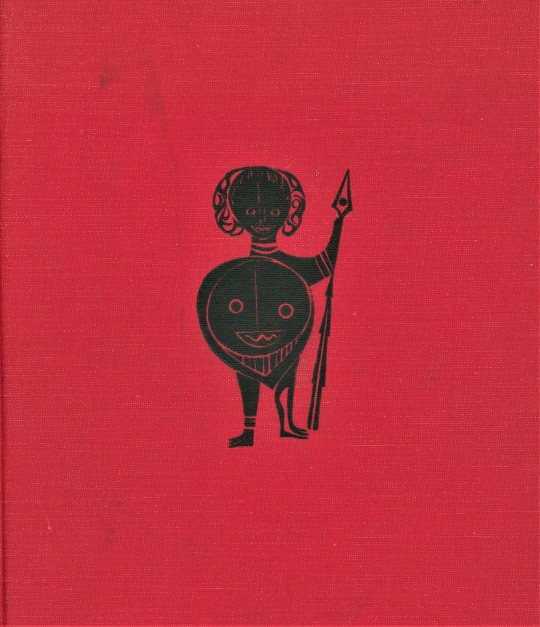
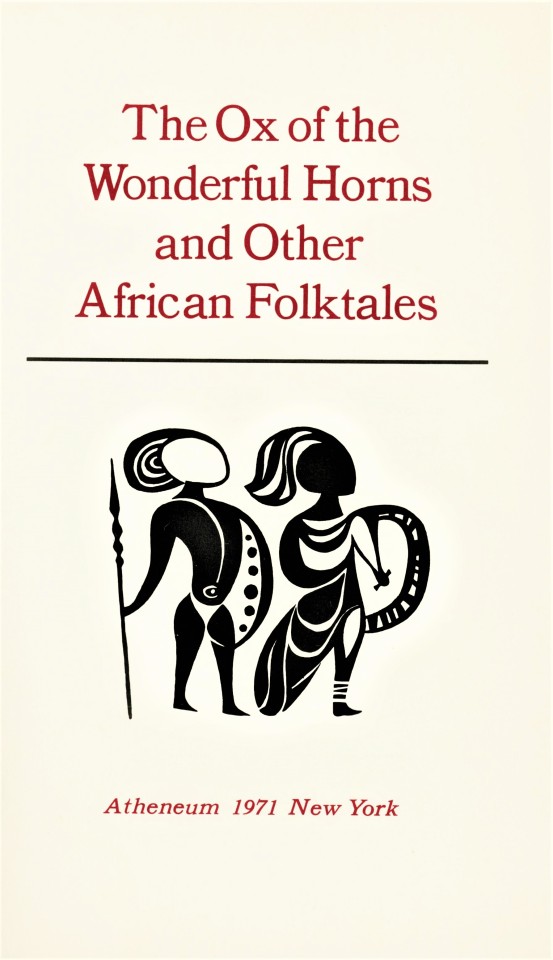
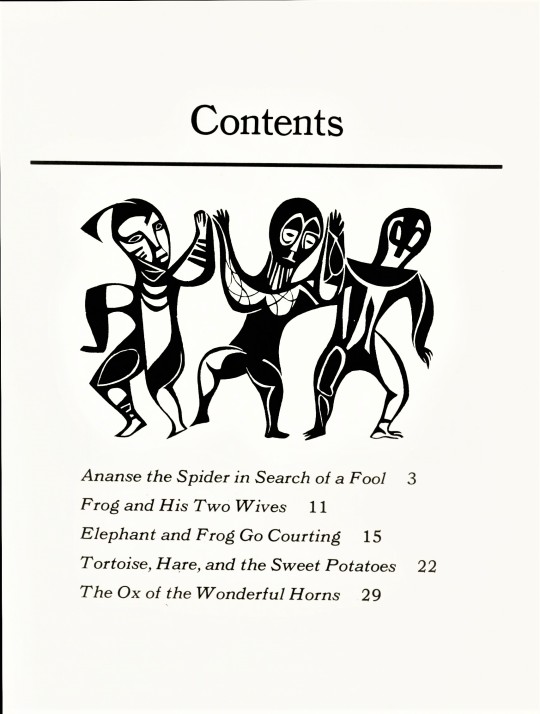
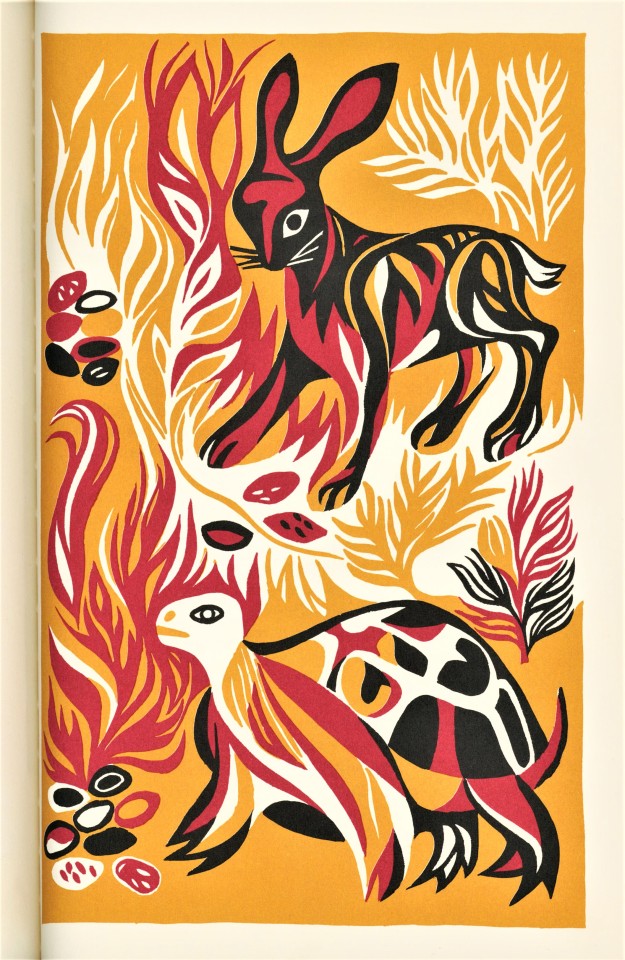

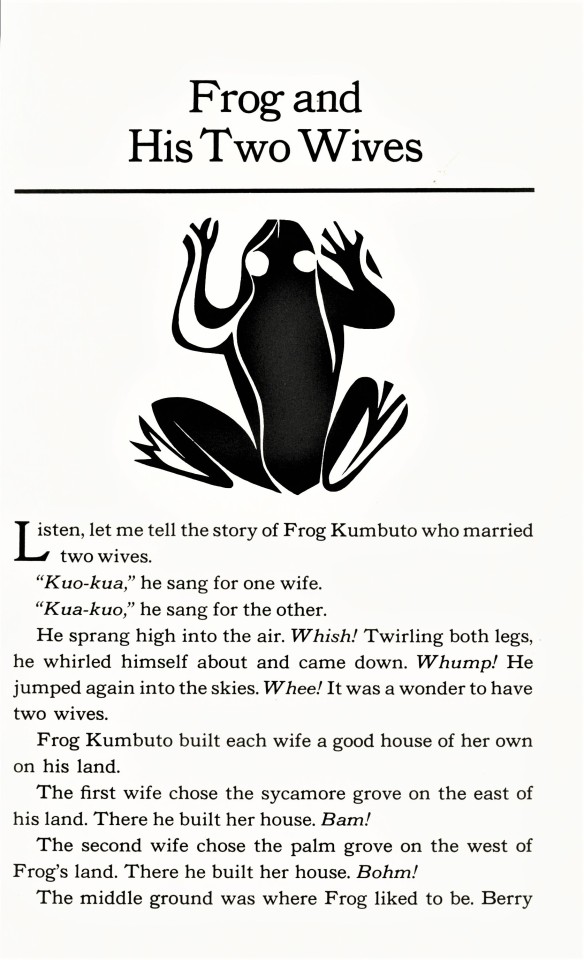

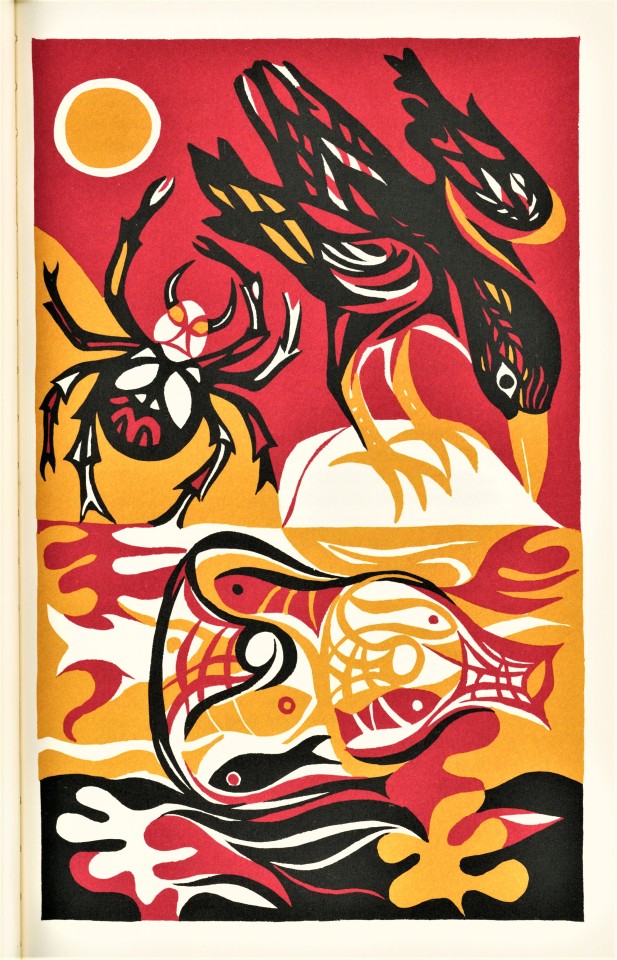
Spotlight: African Folktales
For Black History Month I found another book of folktales (shocker) to share with you all! The fun and exciting part of this job is being able to look into things that one would not normally take the time to explore, and I have been given the opportunity to do nothing but explore and dig into the expansive collection we have in Special Collections (if you aren’t getting interested to come in and take a peek, you should be).
The book I am keen on sharing is The Ox of the Wonderful Horns: And Other African Folktales, a children’s book from our Historical Curriculum Collection, published in New York by Atheneum in 1971. The stories were retold and illustrated by Ashley Frederick Bryan (1923-2022), an American writer and illustrator for children’s books, of which most of his subjects focus on the African-American experience. Bryan’s desire and challenge for the anthology was to “bring the stilted language of the linguists’ narration back to an oral tradition through rhythm and poetic verses.”
This anthology features five tales from Akan-Ashanti, Angolan, South African, and Kaffir myths with various illustrations accompanying us through each story. The illustrations switch between half-page black and white and full-page color that are meant to evoke African wood block motifs that suggest the ochres and reds of African clay dyes and African textile designs; very eye-catching and absorbing!
View another of my posts.
View more Black History Month posts.
-- Elizabeth, Special Collections Undergraduate Writing Intern
#Black History Month#black writers#black illustrator#folklore#folktale#african folklore#animal tale#animal folktale#south african#kaffir#akan-ashanti#angola#ashley bryan#ashley frederick bryan#Atheneum Books#The Ox of the Wonderful Horns: And Other African Folktales#children's books#Historical Curriculum Collection#Elizabeth V#Elizabeth V.
203 notes
·
View notes
Text

"Opening of the II Congress of the MPLA - Labor Party. On the podium - Chairman of the MPLA - Labor Party, President of the NRA Jose Eduardo dos Santos"
From the Soviet photo book "Ангола" published by Planeta Publishers. 1987
7 notes
·
View notes
Text
24 notes
·
View notes
Text
I colored one of my pages of Queen Nzinga. Let me know which historical figure should I do next!
#timelapse#black coloring books#black coloring pages#juneteenth2024#juneteenth#angola#african queen#african history#african fashion#african art#historical art#historical fashion#free printable#free coloring pages#black tumblr#black art
17 notes
·
View notes
Text
have been trying to narrow down an exact topic for this research project and i was initially going to research the trade of pigments and dyes in ancient aksum (in what is now eritrea and ethiopia) and how this connected to indian ocean trade networks but my prof told me that i should instead research the textile industry in the sultanate of kano (1350–1805ce in what is now northern nigeria) because it was and still is known as a global hub for textile production and thus would be easier to find information on it so i'm pivoting to that for this project [he didn't really give me a choice lmfao but its fine] but i do want to return to dye & pigment trade in the horn of africa at some point because the preliminary research i was doing on it was fascinating. he is very much right about it being easier to find info on kano though, like i even have some saved readings about textiles in kano on my gdrive that i found years ago without even trying and when he brought it up i already knew why so like. i get it lol
#his specialty is west central africa (mainly portuguese angola) so i think he favours topics on the western half of the continent lol#which is fine i like learning about west africa too ill learn about anything but it is a bit limiting#btw this is an african history course hlsdkfsj
26 notes
·
View notes
Text
I have something beautiful to share with you all: give this a listen. What do you think it is?
There's many different versions of this song, just type "Misibamba" on spotify or youtube, and enjoy. It's specifically an AfroArgentinean song, with most of the versions of this song recorded in Buenos Aires. According to african scholars, the song was originally in kikongo, possibly from the Benguela Nation, and it's traditionally sung to call on God (Nzambi Npungu). Some of the words have gone through slight (and not so slight) pronunciation or spelling changes but it's still recognizable for scholars in Angola!
What scholars say about it being originally used to call on God fits our own oral tradition and custom too, it's a religious song. Our elders sing it in times of need, when you need that extra ancestral and divine protection or guidance, and Elders say it was originally sung by our Ancestors in the slave ships as they were crossing the atlantic !!!
And it's not even the only song that remains! there's many other songs in african languages and derived dialects, remembered and sung by afroargentine Elders across the country. After so many years of denial and historical whitewashing, I'm so, so deeply grateful for all the afroargentine and african scholars, and afroargentine collectives and associations, working to preserve our music and dialects, and finally bring them back to the light, to remember and honor our Ancestors.
#Afroargentina#Afroargentinean#Afrolatinos#Afrolatines#Afroargentine#Afroargentines#history#afroargentine history#kikongo#angola#benguela#Nzambi Mpungu#ATRs#ADRs#African Traditional Religions#african diaspora#black argentina#black argentines
19 notes
·
View notes